How To Make Carnivorous Bog Container Garden
For a fun new twist on your typical terrarium, why not try swapping succulents for carnivorous plants? We had Robynne Heymans and Mike Madden, owners of Embark Garden, a New York-based plant design company, show us how to make this eye-catching, carnivorous bog planter in four simple steps.
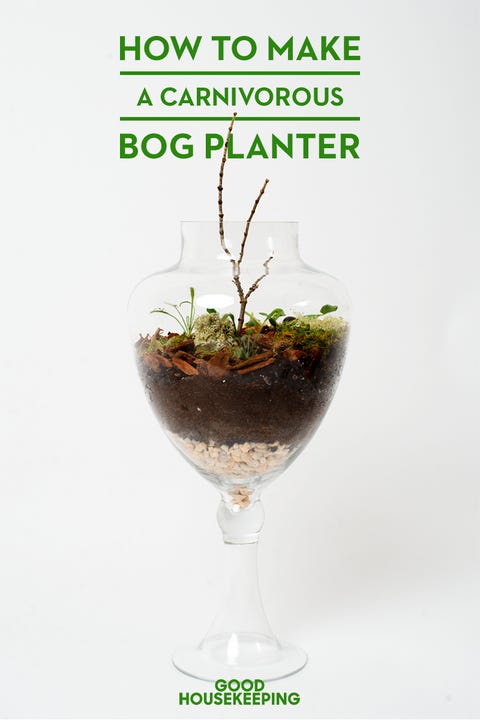
Tyler Joe/Designed by Megan Tatem
How to Make a Carnivorous Bog Planter
Start With:
- Clear container with no drainage or lid (a glass vase would be perfect!)
- Pebbles for drainage
- Horticultural charcoal
- Sand
- Peat moss or carnivorous plant blend soil
- Carnivorous plants
- Distilled water
Heymans recommends using organic products when possible to avoid chemical additives. You can find these supplies at most nurseries, hydroponic stores, or hardware stores that sell orchids. The carnivorous plants seen here are from Midtown Carnivores.
Recommended Plants:
- Bladderworts
- Australian pitcher plants
- Butterworts
- North American pitcher plants
- Venus flytrap
- Sundew
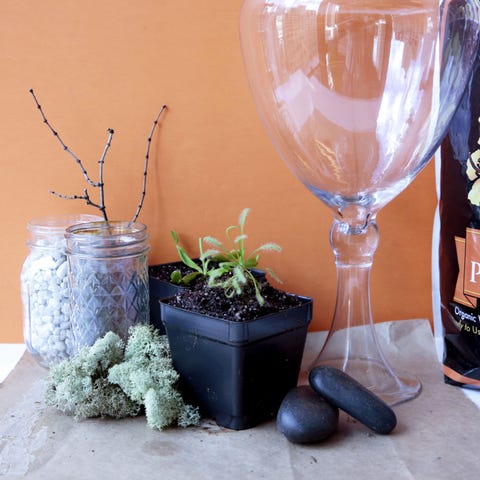
Erin Phraner
STEP 1: Place pebbles and charcoal in bottom of large glass container.
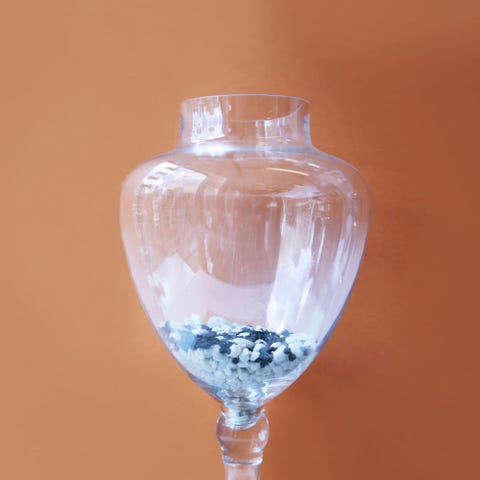
Erin Phraner
STEP 2: Add a layer of sand and soil.
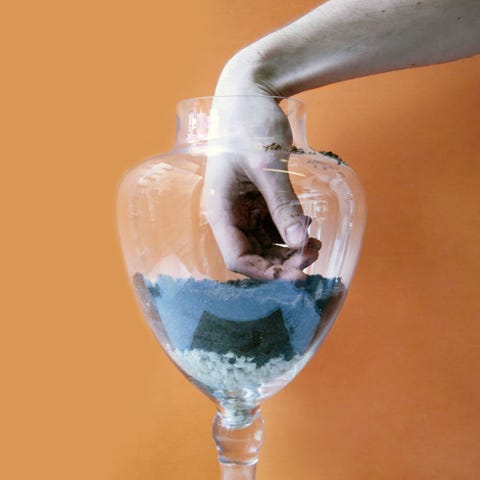
Erin Phraner
STEP 3: Add the carnivorous plants.
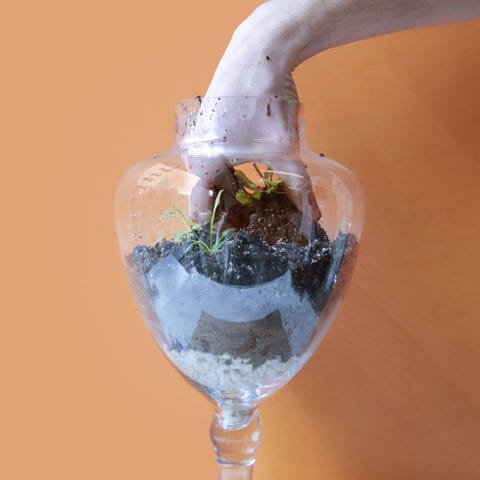
Erin Phraner
STEP 4: Layer with decorative moss, bark or pebbles for the finishing touches.

Erin Phraner
How to Take Care of Your Carnivorous Bog Planter
- Keep soil moist but not too soggy — a great way to check is to make sure the soil is always a dark brown color. You can fill the container so that you see a little bit of water in between the pebbles at the base, then water again once that water gets used up.
- Use distilled water whenever possible — regular tap water contains additives such as chlorine which are hard for the plants to process.
- Carnivorous plants need bright, direct light during summer (ideally from a south- or west-facing window).
- In their winter dormancy, give them low, indirect light (November through February).
- Make sure there is no lid on your container or it will have a hot car green house effect and kill the plants.
- Keep away from radiator in the winter.
- Clip off any dead leaves.
- Expect to repot every year with a new plant as the old plants outgrow the container.
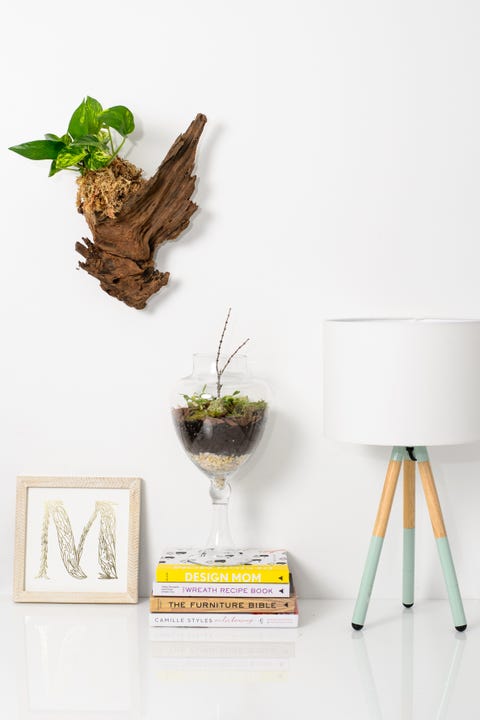
Tyler Joe
Feeding Directions
Carnivorous Plants DO NOT REQUIRE feeding. They get their energy from photosynthesis like any other plant, so all they need to survive is light and water. However, insect carnivory serves as their version of using fertilizer. So you don't need to feed your plant, but if you do, follow these tips from Midtown Carnivores:
- Venus Flytraps consume live food. The movement of a live insect inside a closed trap tells the
plant that it has captured prey rather than debris. - First, catch a live insect or buy a small cricket from a pet store. The prey should be no more than 2/3 the length of the trap.
- Optional: Place the insect in a small, closed sandwich bag and place the bag in the refrigerator or freezer long enough for the insect to stop moving/pass out from the cold, but not long enough to kill it.
- Grasp the insect with tweezers. Brush it back and forth along the inner surface of the trap and its trigger hairs until it closes. Then release your hold on the insect and pull your tweezers gently out of the closed trap.
- The insect will warm up and move around inside the trap, causing it to gradually close tighter. The trap leaf will digest the insect and re-open about a week later, leaving behind the insect's shell. Removing the shell is optional.
- Sundews can be fed either live or dead caught insects, freeze-dried bloodworms or small fish food flakes. Small crickets may also be used, but if alive, their legs and arms should be removed to prevent escape. Place the food directly on the tentacled leaf surface. Feed one to two leaves of the sundew every week or two. You can also place them in an area with a lot of fruit flies if you notice them in your kitchen.
Pin It for Later!
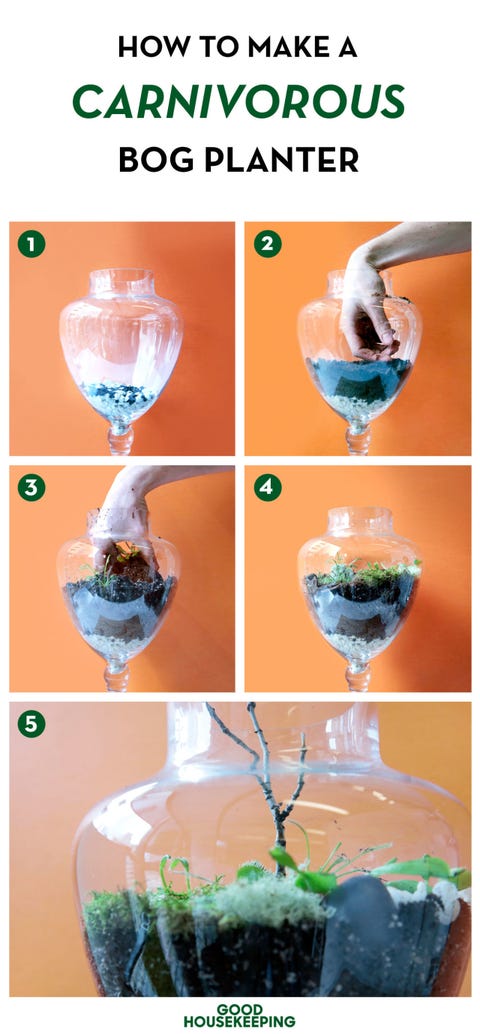
Erin Phraner/Designed by Megan Tatem
Watch It in Action:
This content is imported from YouTube. You may be able to find the same content in another format, or you may be able to find more information, at their web site.
Follow Good Housekeeping on Pinterest and Instagram.
Lyndsey Matthews Freelance Writer Lyndsey Matthews is the Destination News Editor for AFAR; previously she was a Lifestyle Editor across all of Hearst Digital Media's brands, and a digital editor at Martha Stewart Weddings and Travel + Leisure.
This content is created and maintained by a third party, and imported onto this page to help users provide their email addresses. You may be able to find more information about this and similar content at piano.io
How To Make Carnivorous Bog Container Garden
Source: https://www.goodhousekeeping.com/home/gardening/how-to/a38063/how-to-make-carnivorous-bog-planter/
Posted by: thralltivent.blogspot.com

0 Response to "How To Make Carnivorous Bog Container Garden"
Post a Comment